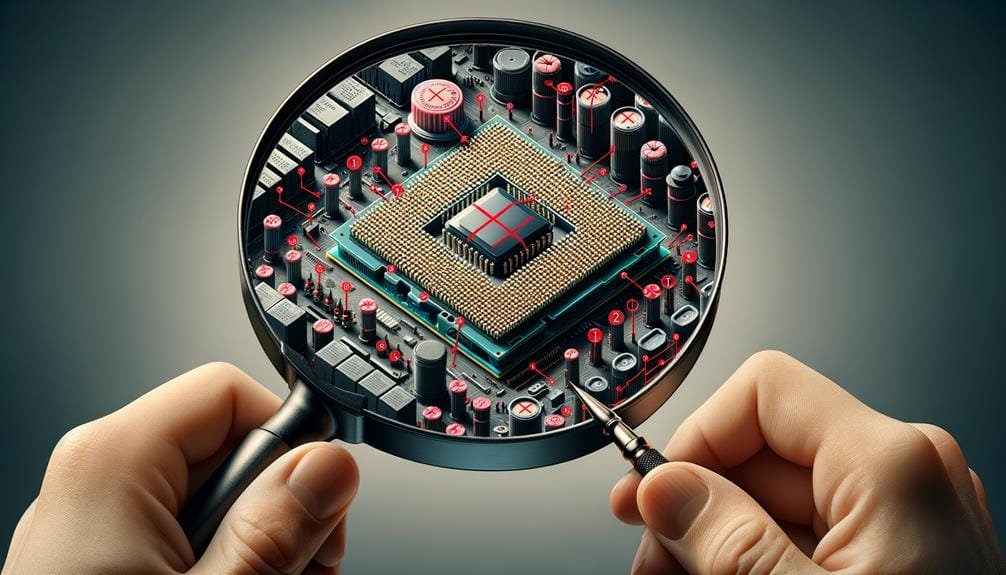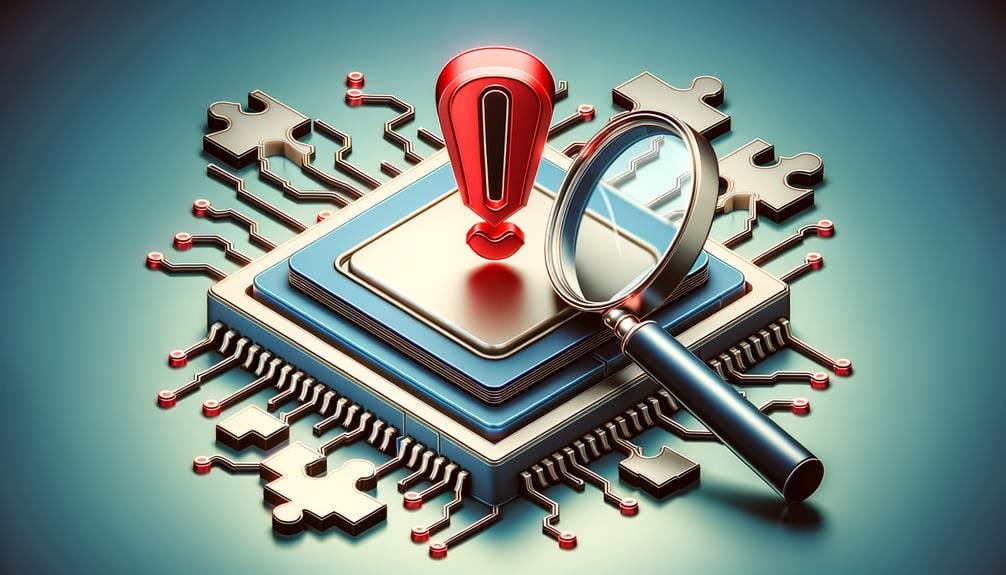Our Newsletter
Sign up for our e-mail newsletter and stay informed for what’s next on the horizon.
Have you ever experienced the frustration of purchasing a brand-new processor, only to realize it doesn’t align with your motherboard’s socket? We’ve all been there, and it can be a real nuisance.
That’s why we’ve compiled these eight crucial tips for CPU compatibility. This guide will assist you in dodging such obstacles, making sure that your CPU and motherboard are a perfect pair in the world of silicon.
However, it’s not as straightforward as merely inspecting socket types – there are additional factors you might not have considered. Curious to learn what they are? Stay with us, and we’ll disclose everything.
To wrap up, it’s crucial to emphasize that thorough compatibility checks can ward off a host of computer difficulties.
By being attentive to a variety of factors—socket type, TDP, BIOS updates, manufacturer guidance, and the utilization of online tools—you’re equipped to sidestep system issues.
Don’t underestimate the significant hazards of mismatched motherboards and CPUs.
Bear in mind, prevention always trumps addressing issues post occurrence.
Stick to these fundamental guidelines for a smooth, speedy, and effective future for your computer.
To fully comprehend the concept of CPU compatibility factors, we need to ensure first that the CPU and motherboard have the same socket type for ideal physical compatibility. This is a key factor that establishes the connection between the two. If you’re using an Intel or AMD processor, make sure your motherboard supports the exact socket type. Otherwise, the CPU and motherboard combination won’t work.
The subsequent element is the Thermal Design Power (TDP). This is the highest heat amount a CPU can generate that the cooling system needs to dissipate. Motherboards feature a TDP range, and the CPU’s TDP should be within this range to prevent excessive heat.
Keeping the BIOS up to date is also necessary for CPU compatibility. It’s not rare for a CPU to be incompatible with a motherboard because of outdated BIOS versions. Therefore, always visit your motherboard manufacturer’s website for the most recent BIOS updates.
To verify CPU compatibility, online tools can be used. These tools offer a CPU compatibility list that pairs CPUs with motherboards. Refer to manufacturer instructions for accurate information on supported CPUs and compatibility. This ensures you have flexibility in your hardware selections.
Understanding the basics of CPU compatibility elements, we’re set to delve into the procedure of verifying motherboard CPU compatibility, spotlighting the technical aspects like socket type, BIOS version, power requirements, and RAM compatibility.
The initial step requires confirming that the CPU socket type of your chosen CPU aligns with the socket on your motherboard. This physical compatibility is a key factor in determining if your system will function.
Following this, it’s crucial to confirm if the motherboard’s BIOS version supports your selected CPU. Certain motherboards may need a BIOS update to support newer CPUs, and neglecting this step can lead to compatibility problems.
Subsequently, take into account the power requirements of your CPU. Ensure the motherboard can provide the required power to avert system instability or damage.
Also, verify if your CPU and motherboard are compatible with your RAM. Incompatible RAM can lead to system crashes or impede performance.

Moving ahead, our focus will be to pinpoint frequent incompatibility problems between CPUs and motherboards.
Our first step involves grasping how mismatches between CPUs and motherboards transpire, followed by an in-depth examination of socket incompatibility issues.
Lastly, we’ll address typical BIOS version complications, emphasizing how these problems can be foreseen and lessened.
Commonly, we observe that incompatible socket types between the motherboard and CPU initiate compatibility problems, preventing the smooth coordination of these essential computer components. Identifying a CPU-motherboard mismatch is significant when selecting a CPU or a motherboard. We need to confirm if the motherboard supports the CPU’s specific socket type to ensure CPU-Motherboard compatibility.
Here’s a brief guide:
| Potential Issue | Solution |
|---|---|
| Misfit CPU and motherboard socket | Confirm the specific socket type before buying |
| The motherboard doesn’t support the CPU | Refresh the BIOS or pick a compatible CPU |
| Insufficient power for the CPU | Confirm the motherboard can fulfill the CPU power needs |
| BIOS incompatibility | Refresh the BIOS or pick a suitable motherboard |
To truly comprehend the severity of socket incompatibility issues, we first need to look into the usual issues that crop up from mismatched socket types between the motherboard and CPU. An incongruity between the CPU model and the socket on the motherboard can result in serious incompatibility problems.
It’s crucial to keep in mind that the CPU is only compatible if the socket type of the motherboard and the CPU coincide. Ignoring this critical detail while choosing and assembling CPUs and motherboards can harm both components. It’s not merely about the power of the CPU or the abilities of the motherboard; the compatibility between the motherboard and CPU is of utmost importance.
Just like the discordance of sockets can disturb the smooth functioning between the motherboard and CPU, conflicting BIOS versions can likewise lead to grave complications.
When dealing with BIOS version issues, our first step should be to determine the present version of the motherboard’s BIOS and cross-reference it with the compatibility lists and BIOS updates given by the manufacturer.
If the motherboard’s current BIOS version doesn’t support the CPU upgrade, we’ll have to upgrade the BIOS by following the manufacturer’s instructions. This action is crucial to assure peak performance and overall system stability. Failure to upgrade the BIOS might cause performance problems and system instability.
Recognizing these common incompatibility issues is the key to achieving peak performance.

Understanding the intricacies of CPU compatibility becomes a simpler task thanks to online tools. These resources verify key details such as socket type, chipset compatibility, and other important hardware matches. They provide an effective method to verify CPU compatibility with your motherboard, serving as a valuable reference for making knowledgeable choices when picking a CPU.
To use these tools, you only need to enter your CPU model. The tool will then determine if the CPU is compatible with the socket type and the chipset of the motherboard. It also checks for compatibility with other hardware components, such as the RAM DDR type, storage connector type, GPU slot, and PSU connector. This thorough evaluation provides complete CPU support information, aiding in avoiding potential hardware damage during installation.
Often, manufacturers provide these online tools, assisting in making educated choices when picking a CPU. By using these aids, we confirm that the chosen CPU isn’t only potent and efficient but also compatible with the existing hardware. Using these online tools is a key step in the CPU selection process, significantly easing installation and allowing the freedom to make the best hardware choices.
In order to assure optimal compatibility, our initial emphasis will be on comprehending the details of CPU specifications – a fundamental element for making informed choices during the selection phase.
Following this, we’ll consider how to proficiently evaluate motherboard compatibility, a crucial procedure when constructing a system.
These methods are essential for creating a well-coordinated, efficient system.
Understanding the specifications of a Central Processing Unit (CPU) is vital for ensuring compatibility, which begins with aligning the CPU and motherboard socket types. This is an essential step, be it an Intel Core or AMD Ryzen, for the overall functionality of the system.
If you plan on upgrading an existing PC build, compatibility with the existing motherboards is important. It’s a good practice to pair your CPU with a motherboard that has a higher Thermal Design Power (TDP) range to avoid overheating issues.
CPU manufacturers frequently release BIOS updates to support new CPUs, so keeping yours updated is advisable. Lastly, don’t shy away from using online tools or referring to the manufacturer’s instructions for additional assistance.
These steps will ensure the CPU integrates smoothly into your system.
In the pursuit of ideal system performance, it’s vital to thoroughly analyze the compatibility of the CPU and motherboard. This involves paying close attention to essential elements such as socket type, Thermal Design Power (TDP) range, an updated BIOS, and instructions provided by the manufacturer.
Making sure that your selected CPU aligns with your motherboard is of the utmost importance, as incongruent components can lead to system instability or breakdown. Start by evaluating the motherboard’s compatibility with your chosen CPU, using the motherboard’s specifications and the manufacturer’s advice as references.
Verify the motherboard’s TDP range to ascertain it matches with the CPU’s TDP. This ensures that the motherboard can handle the thermal demands of the CPU.
Within the motherboards, your CPU—whether Intel or AMD—needs to fit perfectly in the socket. The socket type of the motherboard should be compatible with the CPU you have chosen. It’s essential to double-check this compatibility to avoid any issues.
Lastly, ensure the BIOS is updated for the correct CPU, which aids in confirming compatibility. The BIOS, or Basic Input/Output System, is responsible for initializing hardware during the boot process. An updated BIOS ensures that the motherboard recognizes and supports the specific CPU you have selected.

Ignoring the significance of CPU and motherboard compatibility might lead to underperformance, system breakdowns, and possible hardware damage. The CPU holds a central position in our PC’s functionality, which makes its choice important.
A mismatch could result in exceeding the motherboard’s TDP (Thermal Design Power), which may cause hardware harm. In the same way, the cooling system might not be enough for new CPUs, resulting in overheating. Also, a discrepancy can put pressure on the power supply unit (PSU), jeopardizing the entire system.
To sidestep these risks linked with an incompatible CPU, always make sure its specifications match those of the motherboard. Our liberty to select the correct components should not destabilize the system.
Here’s a table summarizing the potential hazards and solutions:
| Potential Hazard | Solution |
|---|---|
| Exceeding Motherboard’s TDP | Choose a CPU that aligns with the motherboard’s TDP |
| Inadequate Cooling System | Make sure the cooling system is enough for the new CPU |
| Pressuring the PSU | Ensure that the PSU can accommodate the CPU’s power demand |
Understanding the possible issues that may arise from a CPU and motherboard mismatch, this guide will assist you in troubleshooting these incompatibility problems.
The CPU, commonly known as the computer’s central processing unit, is vital for the best system performance. Inconsistencies can occur if it doesn’t align with the type designated by the motherboard’s manufacturers.
The following detailed guide will aid you in making informed decisions when dealing with incompatibility issues:
Though the process may seem complex and detailed, it’s necessary for preserving your computer system’s health and performance. If troubleshooting proves ineffective, it may be helpful to reach out to a professional.

Addressing CPU incompatibility issues effectively begins with confirming that the CPU and motherboard share identical socket types, ensuring physical compatibility. This is an important factor when choosing a CPU, as distinct models of well-known CPU brands have various socket types.
Following this, we need to check the CPU’s Thermal Design Power (TDP), which indicates how much heat a CPU can generate. This must be in line with the motherboard’s TDP range to avoid overheating. An imbalance in this could result in performance problems.
It’s also crucial to understand if a CPU demands specific BIOS updates for compatibility with existing motherboards. Manufacturers of motherboards frequently publish updates to provide support for new CPUs, thereby improving the interaction between the CPU and motherboard.
To aid us, there are web-based compatibility tools that perform checks to ensure the CPU and motherboard share common features. Making use of these resources and following manufacturer advice is extremely helpful.
In closing, it’s important to underscore that meticulous compatibility verification can prevent numerous computer complications.
By staying alert to the multitude of factors—socket type, TDP, BIOS updates, manufacturer recommendations, and the use of online resources—you’re prepared to avoid system issues.
Don’t overlook the serious risks of incompatible motherboards and CPUs.
Keep in mind, prevention is always better than solving problems after they occur.
Adhere to these basic principles for a seamless, swift, and efficient future for your computer.
We examine the socket type, Thermal Design Power, overclocking capacity, core numbers, multithreading functionality, fabrication method, energy use, influence on gaming, significance of cache memory, and CPU design when assessing CPU compatibility.
To ensure our CPU is compatible, we must look at specific elements such as the motherboard’s characteristics, the type of CPU socket, updates to the BIOS, the sufficiency of the power supply, the cooling system design, the design of our computer’s structure, the ability to adjust CPU speed, compatibility with the operating system, the physical mounting process, and the compatibility with the system’s memory.
Our selection of an appropriate CPU that aligns with specific needs would be influenced by factors such as financial limitations, demand for performance, energy effectiveness, potential for overclocking, anticipation of future needs, multi-threading capabilities, relevance of core count, gaming needs, CPU heat management solutions, and fondness for certain brands.
Our choice of CPU isn’t solely dictated by the brand or cost involved. Factors such as performance rating, energy usage, potential for overclocking, abilities for multi-threading, number of cores, size of cache, type of instruction set, and thermal design power are all crucial aspects we take into account.
Sign up for our e-mail newsletter and stay informed for what’s next on the horizon.